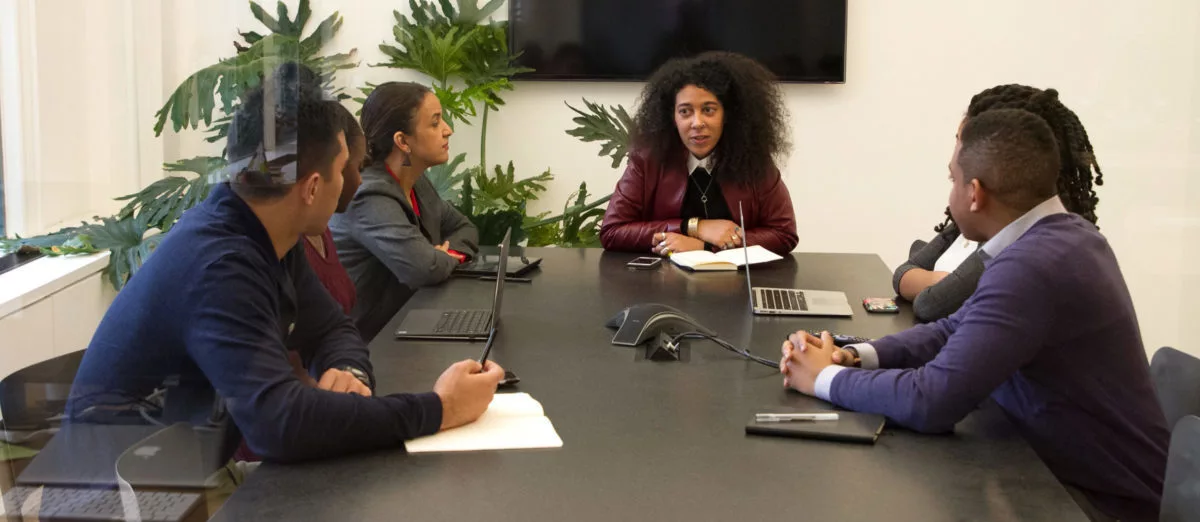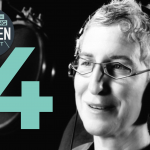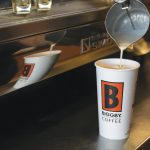During this unprecedented economic and social climate, BIPOC-led worker cooperative initiatives are demonstrating how equitable business models can shape an economic recovery in the U.S. Worker cooperatives are businesses democratically owned by their workers. While there are many ways to structure worker-owned businesses, the key is giving employees a seat at the decision-making table.
Worker cooperatives outperform traditionally structured businesses on many key metrics that indicate a move toward equity and deeper engagement, including:
- The Democracy at Work Institute and the U.S. Federation of Worker Cooperatives shared in its 2019 State of the Sector Report that participating worker cooperatives reported an average top-to-bottom pay ratio of 2:1, which is in stark contrast to the average pay ratio at traditionally structure businesses of 30:1.
- At co-ops studied by DAWI, worker-owners have 33% higher median income from wages and their median job tenure is 53% higher.
In this conversation on “Charting a New Path for Economy Recovery and Racial Justice Through Worker Ownership” originally held at SOCAP Virtual in 2020, you can explore these topics further. The session features:
- Alison Powers, Manager of Cooperative and Community Initiatives at Capital Impact Partners
- Todd Leverette, Program Manager of Legacy Business Initiatives at the Democracy at Work Institute and Co-Principal at Apis & Heritage Capital Partners
- Camille Kerr, Co-founder at ChiFresh Kitchen and management consultant
- Edrinna Bryant, Co-founder at ChiFresh Kitchen
You can watch the full session or read an excerpt from the conversation below.
Watch Charting a New Path for Economic Recovery and Racial Justice through Worker Ownership
Alison Powers: Capital Impact has loaned over $2.7 billion, since our inception; $305 million of that has been in cooperative development. Co-ops have always been part of our focus, our DNA, since we started as part of the National Cooperative Bank. We’ve really been looking at how the model can increase racial equity and be a catalyst to wealth creation, which is really what we’re going to talk about tonight, through the lens of worker cooperatives, and employee owned businesses. I did want to mention before I turn it over to my colleagues, the Co-op Innovation Award, which is funding that we provide, because we are larger national lenders, we can’t always do some of the smaller projects that we did in the past. So we like to put some funding toward ecosystem development and really want to encourage cooperative growth and development in communities of color. We really look at this as a way to amplify projects that are culturally relevant, led by community and look at ourselves as a partner and hopefully a validator for some of these projects that are in their earlier stages.
We have given out $400,000 over the past five years. That’s been leveraged to secure more than $3.5 million in additional funding, and we have our folks here tonight, have received the award in the past. DAWI has actually received it twice, and that’s been some of the seed funding for some of the conversion work, and ChiFresh was one of our recipients in 2020 to help launch their start up. So, without further ado, I’m going to turn it over to my partner, Todd Leverette, who is going to chat about Apis and Heritage.
Todd Leverette: I’m a program manager at the Democracy at Work Institute, which is a national 501(c)(3) that’s focused on you bringing employee ownership, democratic employee ownership, as a racial equity tool and a social equity tool, with a focus on using the worker co-op model for employee ownership. I’m also co-principal at Apis and Heritage capital partners and we are an impact-investing firm, that has been incubated by the Democracy at Work Institute and we look to leverage impact capital, to help convert corporately-held, privately-held businesses, over to employee-owned businesses, with a focus on those businesses that have workforces of color and immigrant workforces.
So in essence, we like to help Black and Brown workers buy their jobs. So before I jump in, I’ll start off by, well I have this soapbox thing that, America for me today feels a lot like the late ’90s and a game of Monopoly, for those of you who grew up in the board game era. A few folks own all the houses and hotels and the railroads and everybody else is going around, working our butts off, trying to get past go and try to pay the rising rent.
The average Black family in this country, has one-tenth the wealth of the average White family. Over 60% of Black workers have no dollars in retirement assets and 75% of Black and Latinx workers have zero dollars in retirement assets. So, what employee ownership does and what we believe and what we’ve seen employer ownership do, is shift that dynamic and turn it on its head and shift it away from 1% owning 50% of the board, or 10% owning 80% of the board and it creates an environment, an entrepreneurial ownership environment that’s actually fair and that may actually even be enjoyable and be fun.
It is this shift that we at the Democracy at Work Institute and Apis and Heritage and Alison, Camille, all these teams are working on every day. As we all can say at Apis and Heritage, this is our re-imagining of ownership and entrepreneurship in this country. Briefly, the form of employee ownership that our team at Apis and Heritage looks to lever through an impact fund, is called the ESOPerative model, which is kind of a new term, but essentially what it means, it’s a combination of a legal and tax benefits of an employer stock ownership plan at ESOP and the cultural benefits of a worker co-op. I won’t go into all the detail, but briefly, for those of you who aren’t familiar with ESOP, which is the most standard form of employer ownership in the United States, ESOPs have been in federal legislation for almost 50 years. There are over 6,000 ESOPs in the U.S. and a lot of people don’t know this, but 100% ESOPs pay zero dollars in state corporate income tax, which is a huge benefit that can do a lot, if directed in the right places.
But ESOPs aren’t just a tax advantage. The research shows they also out-perform their peers. They grow faster, they increase profitability more and they increase productivity, productivity of the firm and of the workers, more than their peer firms. So going back and looking at what happened during our last recession, employee-owned firms were significantly less likely to lay off workers and they were significantly less likely to shutter and shut down. Even if you look at time periods where there’s not a recession going on, these ESOP employee-owned firms, default significantly less on their debt, than do their peers. So in general, ESOPs are just a better way, they’re just a better way to do business. Employee-owned businesses, we believe are just better ways to do business, whether it’s a co-op or an ESOP, or another form.
But for us, what’s important is in addition to ESOP’s being better businesses, they’re better for the workers. As I stated before, 60% and 75% of Black and Latinx workers have zero retirement assets. The average worker in ESOPs across the U.S. has over $120,000 in retirement assets in their ESOP account, just in their ESOP account, which doesn’t include any non-ESOP other retirement counts that are 401(K). So our investment model, we look for firms that are doing somewhere between $1 and $4 million dollars in EBITDA, 30 or more workers. We look to invest in these firms for five to six years and we look to accelerate wealth build-up by the workforces of color and provide each worker with between $30,000 to $70,000 of ESOP value by the time we leave the firm, which is significant. We utilize debt, a seller’s note and our product, which is an A&A structured equity mezzanine product, that allows us to recapitalize small and medium-sized firms, to be 100% employee-owned, without over-leveraging the business, which is extremely important, as we all know.
We believe in real ownership and real entrepreneurship for these workforces. We’re talking about aligning interests, the opportunities and the risks of the firm, with the interest, opportunities and risks of the workforce. So in our firms, we look for ways, how can we actually have worker voice in the governance of the firm? Where does it make sense to have worker voice and management operations of the firm. How can we really create ownership? Open-book management, human-centered HR. All these things that really change the culture of a firm. The last thing I’ll say, COVID has really shed a light on the disproportionate amount of risk that workforces, especially workforces of color, in this country take on, without any corresponding reward.
Camille Kerr: Edrinna Bryant and I represent ChiFresh Kitchen, a worker-owned co-operative. Owned by five formerly incarcerated folks. We just got started in the midst of the pandemic here and we do prepared meals for institutions like schools or nursing homes and others that buy daily meals. We’re centering the needs, the wisdom and the power of formerly incarcerated, primarily Black women and in the process, we’re creating something beautiful and also investible and also like something that we can build on.
First and foremost, we’re providing economic security for our worker-owners. But we’re also increasing healthy food access in low-wage communities, by serving food to folks who have food insecurity. We’re raising the profile part of our work in that, the wonderful support that we’ve gotten from capital impact partners, we’re able to raise the profile of cooperatives as an approach to racial and economic justice. Also, we’re working with partners here in Chicago, not just to provide individual meals, or to support our individual members, but to set this stage for a completely new food system and economic system, that’s equitable, racially just, and so that’s part of our larger mission.
Edrinna Bryant: Since May 11, ChiFresh Kitchen has provided living wages and benefits for five worker-owners. We’ve served over 35,000 nutrition meals. We’ve partnered with 22 clients, been featured in 10 news stories. We’re participating in two movement collaboratives.
Camille Kerr: We just got started in the midst of the pandemic. So we registered in March. We did our first test meals in April; our first real meals on May 11 of this year. But we’re buying our own building this year. One of the reasons that we’re able to grow and so quickly, is we have a partner in Boston. Some of you might know them. They’re a social enterprise called City Fresh Foods and they have 100-plus employees and they are over $10 million, close to $15 million, in revenue, and they have been providing support on how we do their same business model. To provide food, they do work with Meals on Wheels, with YMCA, with a bunch of charter schools. They’ve been supporting us on how to do that here in Chicago.
Alison Powers: From the chat questions, this one was directed toward Todd. “Could this fund be brought into worker-ownership to include gig and contract workers?”
Todd Leverette: There are different forms of employee-ownership, different strategies. The strategy that Apis and Heritage is doing as a project, is specifically on closely-held, privately-held companies and converting them over, between employee buy-out. But employee ownership is probably utilized even more, when you’re looking either small startup enterprises, or looking for a way for 1099 workforces, gig workforces, workforces without a lot of different potential to actually aggregate their power and come together and actually provider rides or services.
So, speaking specifically at DAWI, our project is one of several projects. There’s a project that’s a lot more connected with what you’re talking about gig workers, called the RRC, Rapid Response Co-op. They’re looking to deal with people who are in the 1099 world and don’t have all the protections, your typical W-2 workforce, which are getting smaller. Your W-2 workforce is getting smaller and your gig workforce is getting a lot bigger. So that’s a great question.
Camille Kerr: Just briefly, so another initiative, not related to ChiFresh, that’s going on in California, is that there’s a cooperative, we’re working on a bill called The Cooperative Economy Act, that would be a new way for the gig economy, creating cooperatives of gig workers that would then contract with platform companies. So you can check that out at cooperativeeconomyact.org, is another if you’re interested in that specific model.
Alison Powers: How is your business model using co-ops to meet the needs, or address the problems in your community?
Todd Leverett: The main trend that this model was developed to address was the racial wealth cap. What this lack of assets means, is really a lack of opportunity, educational opportunity, entrepreneurial opportunity. The ability to take risks to kind of really better your life and your family’s life. But it also is a lack of resilience, the inability to withstand a medical emergency, or as I stated before, a global pandemic and the communities that need this the most, it’s the reason why situations like this really, really create so many issues and so many problems, and COVID has really helped show that. All that to say, this is our model for how you can move wealth into these communities, in a way that makes sense and a way that’s scalable. But also, how you can create quality jobs, because we have a whole other issue in this country, with the working poor, with jobs that aren’t providing protections and insurance and benefits to workforce. This is a way to address that problem..
Camille Kerr: For us too, I mean we were formed to deal with the fact that criminally incarcerated folks have a really hard time finding steady employment with good benefits and so we’re like, “Well let’s create a workforce where we own it, we know we’re going to pay ourselves well. We know we’re going to treat ourselves well.”
Edrinna Bryant: Also, help other women who have been incarcerated, because as women all know what it feels like to come home and be turned down from so many jobs and it’s sad, but it just happens in our community every day where, you come, you served your time and did your time and now you’re trying to be in rehabilitation. You want a job and you’re just told, “No, no, no.” So to come up with a plan where we can help women that we left behind and other women who came before us, to make sure that they do have somewhere, where they won’t be turned around and that they can build into and own their own business.
Camille Kerr: Then on the other side of our impact, we’re also working to address the food insecurity in our communities, because during the pandemic, there’s families in many of our communities, a lack of access to nutritious food and just access to food security, in general. But the pandemic has made that so much worse. So the other aspect of how we’re serving our community, is by providing meals. Most of our meals right now are specifically to address food insecurity.
Alison Powers: People are really commenting on your growth and project in the chat. So just elevating that support. There’s actually also been several questions in the chat about, “What’s the role of capital in your projects? And what are some of the barriers you’ve faced? Strategies you’ve adopted?” If you can talk a little bit more about investment and capital. There’s been a few people wondering about that.
Todd Leverette: The way our firm is structured, looks a lot like your typical private equity, private debt, type of firm. So we did that and somebody talked about this in the chat. You want to create a model that was familiar, that was familiar to the broader investment world, partly because we want to see this model scale up. We want to see one, two, three going down the line, being able to invest in this model and creating employee ownership, or university endowment, or large institutional investment being able to invest in the career. That being said, the investment that we look to do that, we look to make is a mezzanine/structured equity product. So, these are private-equity transactions. These are larger deals, larger transactions. So we need a large group capital to be able to make this happen.
Because there was a pre-COVID and post-COVID life and as it relates to the financing pre-COVID, our plan was to go out and kind of do independent sponsor, deal-by-deal sort of model. But post-COVID, a lot of the potential investors, people we were talking to said, “Hey, I think there may be an appetite to go out and do the larger investment to vehicle a larger fund.” We’ve actually had really good reception from the broader investment community about being able to invest and first time fund managers, doing a model really helps their community move forward, so.
Camille Kerr: We are registered as a limited worker cooperative association in Illinois, which is a new form. It’s kind of like a combo between a co-op, corporation and an LLC. We helped pass a law that created that and then we registered it. We basically have two classes of shares. We have one class of shares, that’s the membership shares; 100% owned by the core owners. Those are the only voting shares. Then we have preferred shares that provide a target dividend. But right now, we’re a collective. So everyone who’s a member, is an owner, is a director. They make all the decisions collectively.
So we are currently In the process of purchasing a building and we are using both debt and equity capital. Basically the way that it breaks down is, we’re using debt for the acquisition of the building and then we’re using equity to build it out. We are blessed to be working with folks in the cooperative community and folks in this kind of social impact community on some of that money.
So shared capital cooperative, a cooperative that it’s actually structured as a cooperative and it only funds cooperatives. If they are providing our loan capital, we are actually possibly looking at building a new equity product, basically that’s focused on bridging the racial wealth gap, that they might provide some equity with as well. So they’re providing our loan capital for this building purchase and then we’re working with a couple of different folks in the impact-investment community on a possible equity investment around $250,000. That one would be structured basically as a preferred dividend with a little bit of up side, like a range of dividend rights between 5% and 8%, something in this range. Our loan capital is close to about between 6% and 7%.
Alison Powers: When you’ve gone out to look for debt or gotten meetings with investors, what has been the reaction? How do people respond to the concept of employee or worker-ownership and do you think that folks kind of understand or excited about the model?
Camille Kerr: We went to friends. So our friends are very excited about the model. Wwe kind of went inside our community. So we haven’t had to sell the cooperative model to anyone. Everyone we’re talking to was already involved.
Todd Leverette: Yeah, I’d say we’re on the opposite end. We’re talking to people who this is a new idea, a new concept to a lot of ears. But what I really love about it, is it makes intuitive sense in a lot of ways. The idea of the alignment, of incentives, of the company and the workforce. It makes sense to a lot of folks. Most of the questions are around kind of more panic of how really the ESOP model works. It’s a really heavily regulated model, but what we always say is that actually works in our favor. Like there’s no way we’re able to overpay for a company, because the department is just sitting there making sure that workers are not going to overpay for firm. There’s a lot of different checks and balances on the model, that we have to explain investors, to kind of get them to understand that it makes sense.
Alison Powers: Could speak a little bit more about the difference between a ESOP-operative and a worker cooperative. I know you mentioned it before, but kind of why that model is easier?
Todd Leverette: We look at the ESOP from the perspective of, you’ve got this really long-standing, really solid legal protections, regulatory protections around the model and you get that really significant tax benefit. So part of what we talk about when we’re investing, investors who are looking for risk-adjusted returns, this is a benefit that you can’t get from any other type of investment company or fund, which is the elimination of federal and state tax benefit. We really felt that was important to take advantage of that tax benefit of these firms, for the benefit of the workforce and for the benefit of the folks investing in the model. Really look at ESOP as the kind of the legal structure, the tax structure of the business.
Then the co-op model, which is based on these principles of worker participation, worker governance, broader social responsibility and connection between other co-op worker firms, is really about the culture, the ethos, the personality and the values of firms. That is also kind of our bread and butter of DAWI. That’s where we look at that as like the organizational cultural change we’re going to make in the firm. So we kind of see them in different ways they play together.
Alison Powers: Just one more question from the chat and I’ll point this toward ChiFresh. Someone asked about the kind of co-op governance structure and what are some of the barriers to that. I’ll also flip it on its head and say, what are some of the opportunities in that governance structure?
Camille Kerr: ChiFresh is completely a collective, which means that every member is an owner. Every member is a director and there’s no outside directors. So it’s just the team. We have outside people who advise us. Like City Fresh, they give us a lot of advice, they’re just don’t have any governance role
Edrinna Bryant: I’ll just say, I guess it’s just informal. I might disagree and then two or three more might agree with what the fourth and fifth one is saying, right? So we usually just come up, we think about it, we sleep on it, and majority vote outvotes and that’s just the way it is. We just break it down and we talk about it. We go back into the table, we go and sit, until we all come up with something that makes sense .
Camille Kerr: Just one thing about scale: We had a provision in our governance, in our by-laws, that says once we hit a certain number of members, that we consider moving to representative governance, where we elect specific members and could even do outside ones at that point, if we wanted to, but there’s like a turning point that’s built into our model, where if we get too big, then we switch over to at least consider the representative model.







